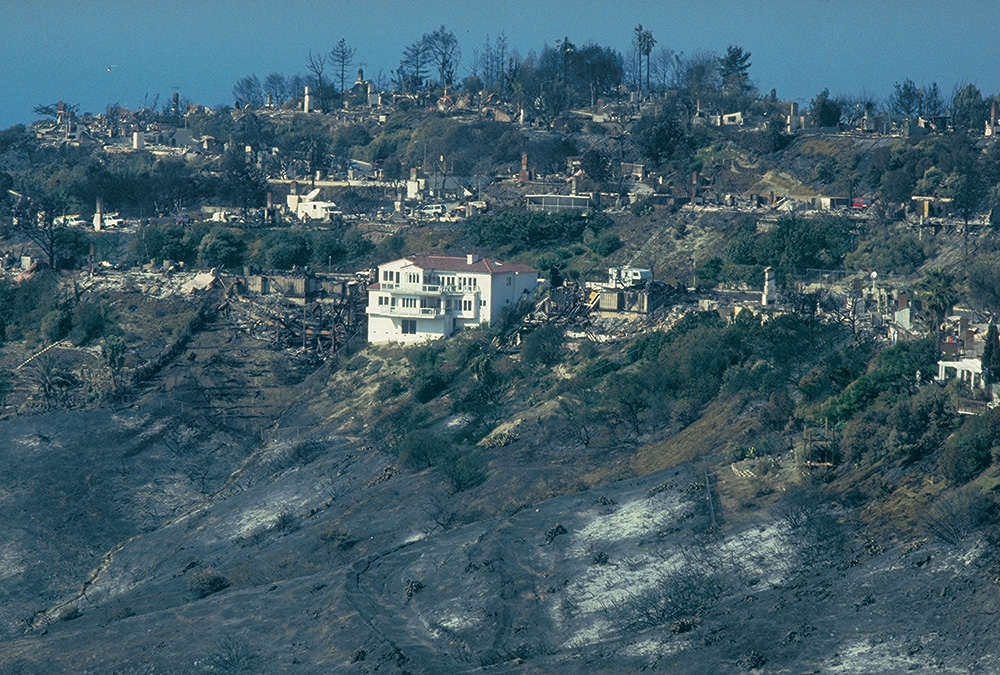This is a 5 1/2 minute video with good information for our brothers and sisters who live or plan to live in “fire country”. My best wishes and prayers go out to all our FReepers who may have been affected by the recent California wildfires or who may potentially be affected in the future.
To: House Atreides
I never thought of that. Add in my attic fan and I might be asking for trouble.
To: House Atreides
Is there some code requirements that require venting? Or some advantage, maybe in cooling?
3 posted on
01/25/2025 10:37:05 AM PST by
edwinland
To: House Atreides
That is interesting, also the Saturday the
AM dial talk shows, l go over the pros and cons of sealing off your crawl space or ventilating your crawl space with subject matter experts on both sides of the issue. It doesn’t repeat often but it comes around maybe once or twice during certain times of the year when it’s an issue.
4 posted on
01/25/2025 10:37:13 AM PST by
Clutch Martin
("The dawn cracks hard like a bull whip and it ain't taking no lip from the night before" Tom Waits)
To: House Atreides
Vented attics are still far better in just about all other areas, as attics otherwise turn into greenhouses if they rid themselves of air as it heats up.
5 posted on
01/25/2025 10:38:42 AM PST by
BobL
To: House Atreides
Ah, vented attics taking the “heat” off DEW
8 posted on
01/25/2025 10:43:37 AM PST by
C210N
(Mundus vult decipi, ergo decipiatur.)
To: House Atreides
I did lots of fire safety training as part of a planning commission job. We were told horizontal, flammable surfaces we the number one correlation to having your house burn. Roof, decks, lawn furniture, landscape materials, etc. Anything an ember can land on and ignite.
To: House Atreides
“””switching to an unvented conditioned attic assembly”””
Are they talking about putting an air conditioner in the attic?
This sounds like something the government would do since they don’t care about the electrical bill.
To: House Atreides
No water and no fire crews worsened the LA fires too.
15 posted on
01/25/2025 10:52:10 AM PST by
Steely Tom
([Voter Fraud] == [Civil War])
To: House Atreides
Blame the victim.
Standard Liberal/Progressive/Socialist/Bolshevik/Maoist/Communist Operating Procedure.
18 posted on
01/25/2025 11:02:32 AM PST by
E. Pluribus Unum
(The worst thing about censorship is █████ ██ ████ ████ ████ █ ███████ ████. FJB.)
To: House Atreides
Apparently having a blue roof (preferably metal) goes a long way toward preventing a structure from burning down.
To: House Atreides
Thanks. This has been known for decades, but it never hurts to instruct and inform people again and again (especially people under 40 years of age who were only 10 years old when this article was published).
Fine Homebuilding Magazine, Issue 96, July 1995
By John Underwood
Fire-Resistant Details
Studying the houses that survived the 1993 Laguna Beach fire storm yields lessons in building to withstand the heat.
Survival of the fittest. Why did some houses-such as that of To Bui and Doris Bender-survive the Laguna Beach fire storm of 1993, while those around them burned? The answer is found in careful construction details that reduced the amount of exposed combustible material and insulated the insides of the houses long enough for the fire to pass by.
“Keeping the envelope sealed can buy precious time.”

• No exposed wood.
• Thick stucco on every surface.
• No attic vents.
• Thick, heavily insulated walls.
• 5/8" Type-X fire-rated sheetrock on exterior walls between plywood shear wall and the stucco.
• No eaves, eliminate the overhang, plug all holes with cement.
• One-hour-rated exterior doors AND jambs.
• Class-A cement-tile roof.
• Wooden deck surfaces troweled over with several layers of fire-resistant coating.
• Undersides of all decking are stuccoed over with a 1 inch layer of cement.
• On downhill slopes, 40 ft. or more of "ice plant" (Californians will know what this is)

21 posted on
01/25/2025 11:08:04 AM PST by
ProtectOurFreedom
(They were the FA-est of times, they were the FO-est of times.”.)
To: House Atreides
One should seal the vents upon an evacuation order and unseal them upon return.
To: House Atreides
Wont be talking about this in a day or so.
There is flood warnings around there now.
They’ll be talking about flood control.
Lol.
23 posted on
01/25/2025 11:10:33 AM PST by
crz
To: House Atreides
24 posted on
01/25/2025 11:11:32 AM PST by
Teflonic
(tt)
To: House Atreides
Better screens on the vents are an easy fix.
26 posted on
01/25/2025 11:16:05 AM PST by
Carry_Okie
(The tree of liberty needs a rope.)
To: House Atreides
A large Quonset hut with windows and a large metal canopy works for me.
42 posted on
01/25/2025 1:02:10 PM PST by
Vaduz
To: House Atreides
See, I knew all along it wasn’t the fault of that jackass governor, or that lamebrain skank running the fire service! It was those dang vented attics.
51 posted on
01/25/2025 5:14:09 PM PST by
fortes fortuna juvat
(President Trump is America's long-awaited SUPREME Commander in Chief. Deus Vult!)
FreeRepublic.com is powered by software copyright 2000-2008 John Robinson


